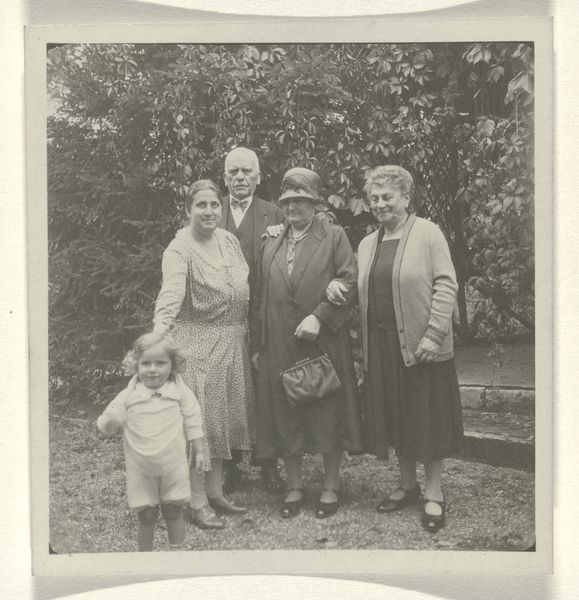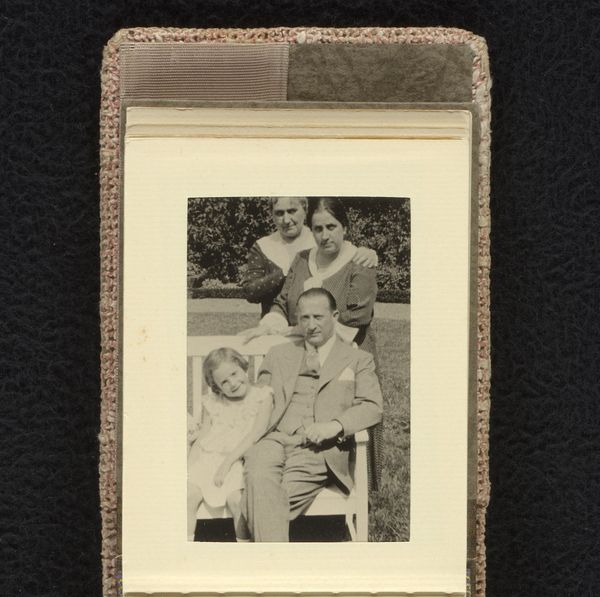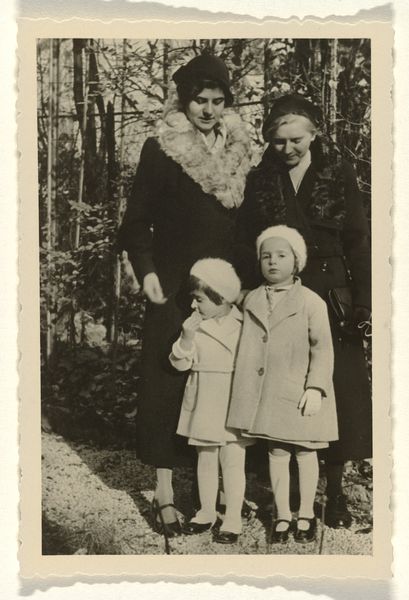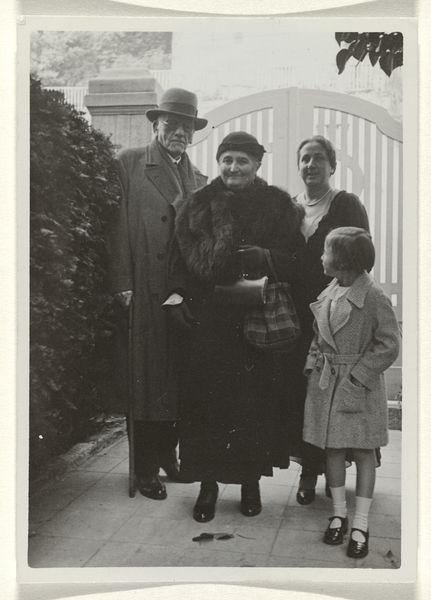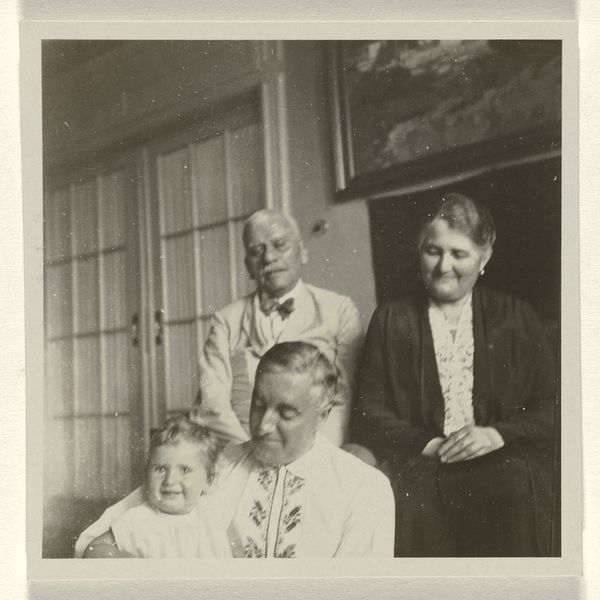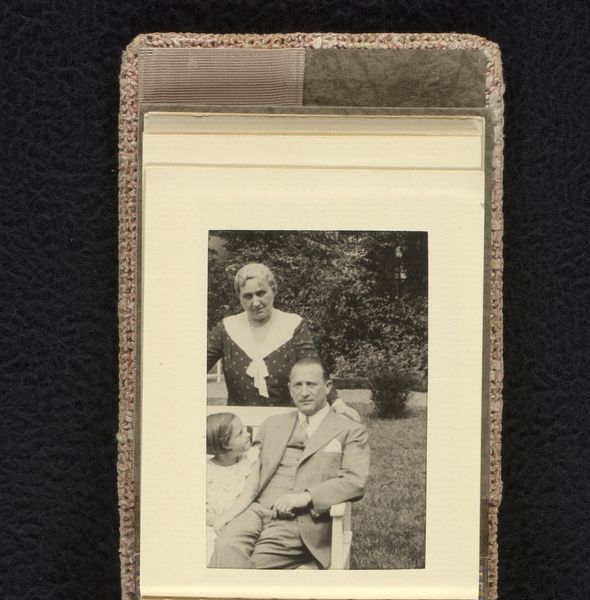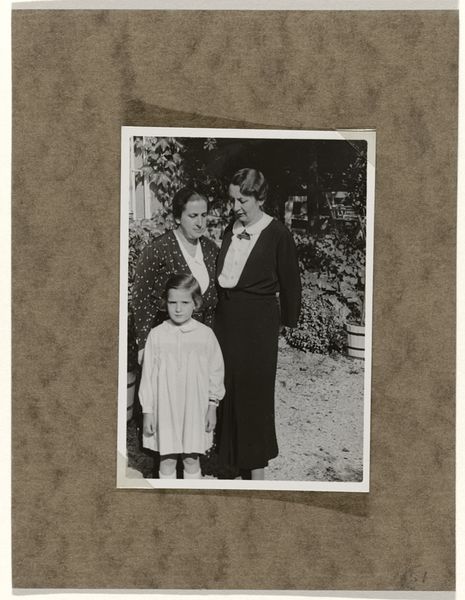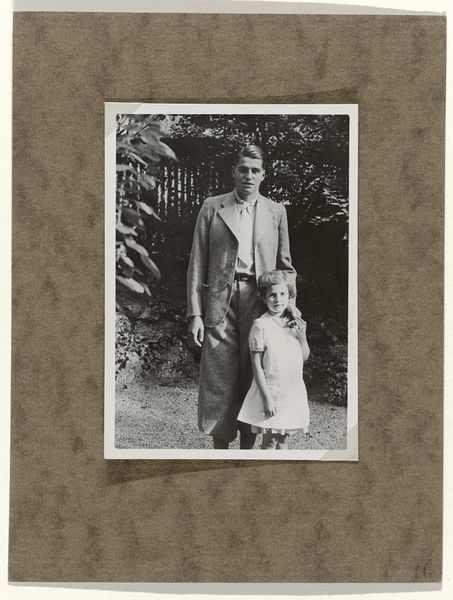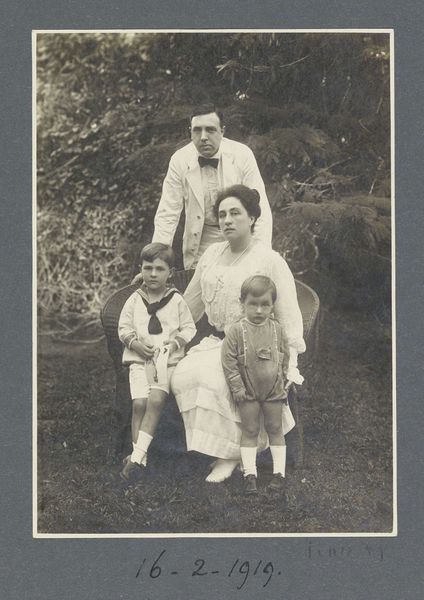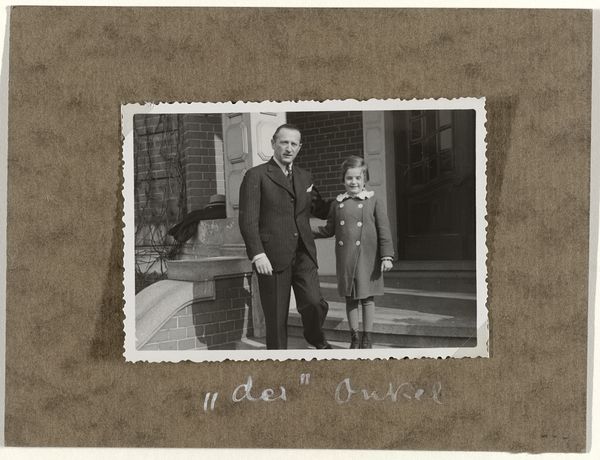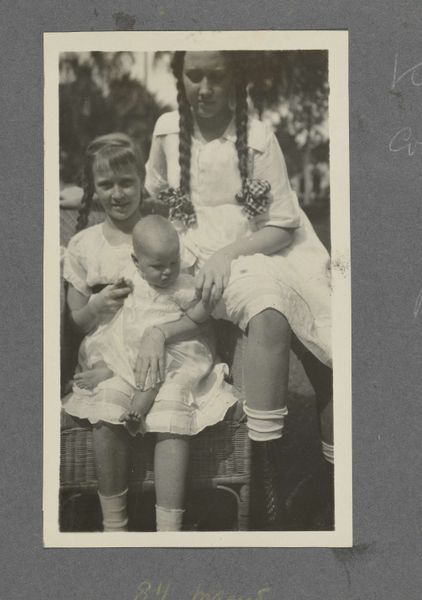
Josefine Levi-Moos, Else Wachenheimer-Moos, Willy Moos en Isabel Wachenheimer gezeten in de tuin van Willy Moos in Hamburg 1928 - 1937
0:00
0:00
Dimensions: height 100 mm, width 75 mm
Copyright: Rijks Museum: Open Domain
Editor: This black and white photograph captures Josefine Levi-Moos, Else Wachenheimer-Moos, Willy Moos, and Isabel Wachenheimer sitting together in what seems to be Willy's garden in Hamburg, dating sometime between 1928 and 1937. It strikes me as a very formal yet intimate portrait, a family frozen in time. How do you interpret this work within a larger historical context? Curator: This photograph, ostensibly a simple family portrait, gains considerable weight when viewed through a historical lens. Given the period—1928 to 1937—the rise of Nazi Germany looms large. Photography served then, as now, as a means of preserving memory and projecting an identity, but for Jewish families in Germany, it also became an act of resistance. A seemingly benign family gathering becomes a powerful statement about their existence, their ties, and their will to endure amidst increasing persecution. Editor: That's a chilling thought. Does the composition offer any clues to their mindset or social standing? Curator: Absolutely. The subjects' attire and posture, combined with the garden setting, speak to a certain level of bourgeois comfort. However, look closer at their expressions. Do you see any anxiety or apprehension there? The careful composition can be seen as an assertion of normalcy and respectability during a period of intensifying antisemitism. It is as though they are attempting to document their existence before the storm. How might their location in Hamburg affect our interpretation, do you think? Editor: Hamburg was a major port city with a large Jewish population, suggesting a potentially vibrant but also vulnerable community. Perhaps the act of photographing the family there was an effort to solidify their sense of belonging? Curator: Precisely. Understanding Hamburg’s socio-political landscape enriches our interpretation. We move beyond a sentimental reading to grasp the image's potential as a conscious artifact, an assertion of belonging. Editor: This makes me rethink the whole image. It's much more than just a family photo. Curator: Indeed. It's a window into a family’s experience, framed by the historical forces bearing down upon them. By understanding the political backdrop, we can find a multitude of meanings within this photograph. Editor: I never considered the photograph to have that depth, seeing it primarily as an intimate family moment, thank you.
Comments
No comments
Be the first to comment and join the conversation on the ultimate creative platform.
